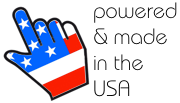In the digital world, having a strong online presence is vital for businesses. SEO (Search Engine Optimization) plays a crucial role in boosting a website's visibility and ranking on search engines.
However, opting for a do-it-yourself (DIY) web builder to create a website can inadvertently impede SEO efforts due to the surplus code generated by these platforms.
Popular DIY web builders like Wix, Squarespace, and Weebly are known for their user-friendly interfaces and drag-and-drop features. While these platforms make it easy for users with limited technical skills to design visually appealing websites, they come with limitations that can negatively impact SEO performance.
Many business owners and marketers are familiar with SEO, but often overlook the impact of excessive code, also known as dirty code, on a website's ranking and visibility in search results.
It is crucial to understand how superfluous code can harm a website's SEO performance.
Page Speed
One major drawback of using DIY web builders is the excessive code they generate. When users design a website using these platforms, the builder automatically creates code in the background to display the design elements on the front end. This code is often bloated, containing unnecessary elements that can slow down the website's loading speed.
Page speed is a critical SEO factor, as search engines prioritize fast-loading websites for a better user experience. Excessive code from DIY web builders can increase loading times, leading to higher bounce rates and lower search engine rankings. Additionally, search engine bots may struggle to crawl and index content on websites with convoluted code, further hindering SEO performance.
Keyword Density
Excessive code reduces the amount of readable content on a website compared to machine-readable code, negatively impacting SEO efforts.
Very few people seem to be aware of "keyword density" as compared to "website code", now how extraneous code (or dirty code) can be a negative factor of SEO affecting a website's ranking in search results.
- For instance:
- If a webpage requires 100 lines of code to generate content but only 25 lines are human-readable text, the text-to-code density ratio is 25%. This means that 75% of the content consists of code, which can hinder SEO.
A well-constructed website should prioritize human-readable content over code.
Websites that are hand-coded or built with an SEO-friendly CMS (Content Management System) typically have minimal code, resulting in a higher text-to-code ratio. In contrast, DIY web builders often produce sites with a low text-to-code ratio.
Cross-Browser Compatibility
While platforms like WordPress or Wix make it easy for beginners to create visually appealing websites, the underlying code is often verbose, which can lead to cross browser compatibility issues, as well as challenging to customize in the future.
To adhere to best SEO practices, it is essential to minimize unnecessary code on a website.
Mobile Responsiveness
In addition to affecting page speed, excess code can impact a website's mobile responsiveness; which is crucial for SEO success in the era of mobile search and Google's mobile-first indexing. By following responsive development practices, websites can align with Google's initiatives and gain favor with search engines.
Poor Code Readability
Well-structured code makes it easier for programmers and web designers to identify key elements and functions, facilitating future updates and customizations without the need for a complete overhaul.
While DIY web builders may seem cost-effective, they can limit access to advanced SEO techniques. Users can mitigate the negative effects of DIY builders by optimizing their websites, leveraging tools like Google PageSpeed Insights, and integrating SEO plugins to implement best practices.
Let's Sum It Up
While DIY web builders offer convenience, they can hinder SEO efforts (due to excessive code resulting in missed opportunity costs) as well as future upgrade and improvement opportunities.
Prioritizing clean coding practices, optimizing website performance, and implementing SEO best practices can help overcome the challenges posed by surplus code, while enhancing a website's visibility in search engine results.













